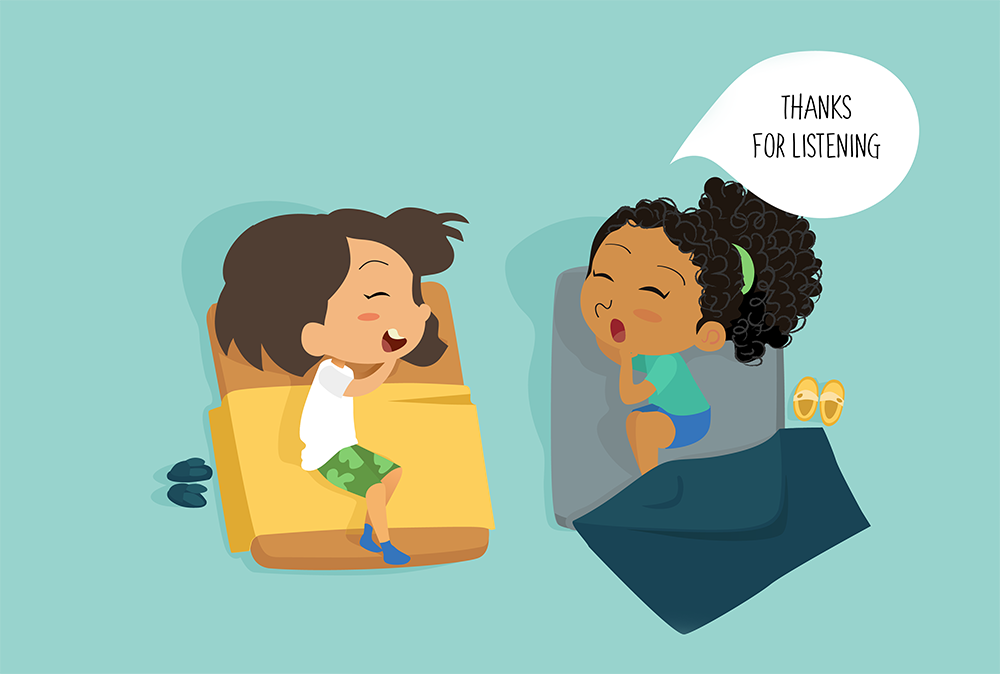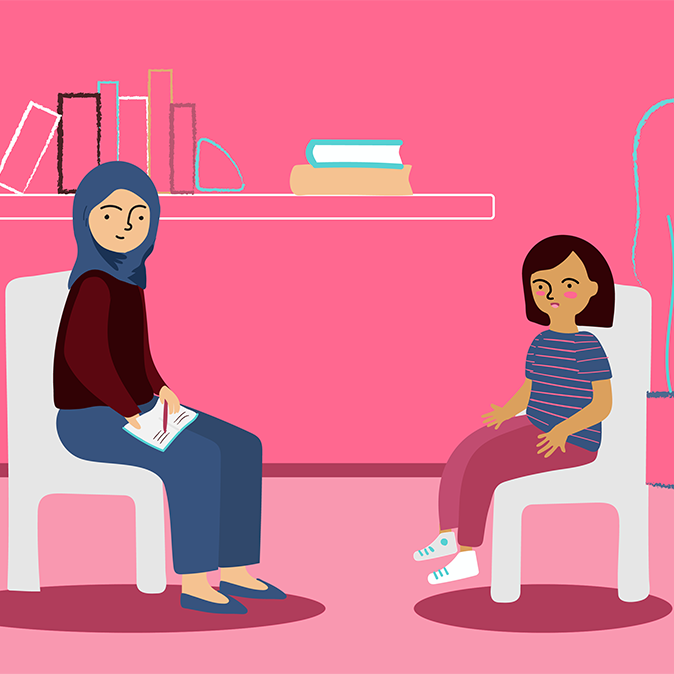The Re:Set Guide
The Re:Set Guide to Helping Your Students Develop Positive Mental Health
1 in 10 children worldwide have a mental health problem.
Would it surprise you if we said that 1 in 10 children worldwide have a mental health problem? What if we told you 50% of mental illnesses begin by the age of 14?
For anyone with a mental health problem, including children, just speaking out about it can make them vulnerable to stigma and judgement. If adults don’t feel they can speak up when they have a mental health problem, how can we expect our children to? Let’s face it, children learn from those around them. They will develop their emotional behaviours from what they observe, and they will similarly develop a fear for speaking out if they see adults address mental health in a hushed, embarrassed manner or it’s not taken seriously. We need to not only reduce the stigma around mental well-being, but we also need to educate our children on developing the key factor in achieving positive mental health: emotional resilience. This simply means giving students the tools to adapt to stressful situations and handle their emotions well.
As teachers, you play an important role in shaping children into well-rounded adults. If you can teach them about emotional resilience, provide them with coping strategies like breathing techniques that they can use when they are faced with a challenging situation, and at the same time, remove the fear and shame of speaking about mental health, it’s a step forward in reducing those damning statistics.


Illustration by (c) Reset Fest Inc, Canada.
For those that have a mental health problem, fear of the reaction they face is often worse than the illness itself. To educate students about mental health, we first need to focus on reducing the stigma that looms over it. Consider initiating a whole-class discussion about what mental health is and what the word ‘stigma’ means to your pupils: what negative attitudes have they heard about mental health issues? Which ones? Do they know anyone with a mental health problem? You can talk about public figures who have shared stories of their mental health issues, perhaps age-appropriate celebrities that the kids can relate to.
Think about some of the key mental health problems that are prevalent among the younger generation — anxiety, depression, eating disorders, self-harm among others. Educate your students on each of these problems, plus any others that you are aware of, and the signs they should look out for in themselves or in others. Make sure you emphasize to your students that there is nothing wrong with having a mental health issue, and it can happen to anyone at anytime. If you have the resources, it would be a great idea to bring a speaker to the school, such as a mental health expert or counsellor. Get them to talk to your class about the myths and facts and encourage your students to ask questions. Learning from someone who has the confidence to talk about the topic will give children the assurance they need to speak out.
Also Read: Why I Started UAE’s First Mindfulness Room in a School
A good way for students to understand their emotions is by giving them a ‘mind tracker.’ Create a grid which lists the days of the week on it. On each day, ask them to fill in the activities they did and how they felt, then talk it through with you. For example, “at 1 p.m. I prepped for my science exam, and I felt anxious.” Not only will this help your students reflect on their feelings, it will help them understand which activities may cause certain emotions and the current coping strategies they use to tackle them. Wherever you can, offer advice and if you think expert support is needed, make sure you involve the school counsellor and the student’s parents first in the decision. These tracking grids might highlight that a child has a mental health issue, and you can hopefully intervene early to help them. However, it’s important that the student, their parents and relevant school staff members are aware of what’s going on.


Illustration by (c) Reset Fest Inc, Canada.
Once your pupils understand what it means to have a mental health issue, work with them on developing emotional resilience and learning about different coping strategies. We are all faced with many challenges each day, so get your students to think about their biggest stressors. What causes them the most worry? What do they get anxious about? How do they cope in these situations at the moment? What do they think are unhealthy strategies of coping? Why not even give them examples of common stressors — a good one would be competitive exams or falling out with friends. We know that these cause kids a lot of stress, so giving them realistic coping strategies is bound to help. Here are some you could explain:
Positive coping strategies:
- Regularly getting 8-9 hours of sleep a night
- Eating well
- Journaling
- Listening to music
- Exercise
- Talking to friends or a therapist
- Meditating
- Breathing exercises
- Watching a film
- Learning to say ‘no’ when they have enough on their plate already
Negative coping strategies:
- Using illegal substances
- Shouting
- Being aggressive
- Bottling up emotions
- Physical violence
- Self-harm
To make things more fun and interactive for your students, you could even practice some of the positive coping strategies in your classroom. Breathing exercises are easy to incorporate and a quick win that students can start using straight away — try a video like this. You could also try meditation, explaining how this helps to relax — you can find plenty of videos online to help. Or, try listening to relaxing music as students will easily be able to access this on their own devices outside of class. Whatever it is, get involved in a group discussion and ask students to share what they think are positive ways of handling stressful situations. This will give them a wide-range of strategies they can experiment with and turn to when they’re faced with poor mental health.
Showing students videos like this can help them understand how mental health problems manifest themselves and it also helps you reinforce the importance of speaking out, reminding them that it’s OK not to be OK. You can ask the kids in your class to create a short video — get them to give a short bio and express how they’re feeling, making sure they know that their identity does not revolve around their mental health. For example, “I’m Sian. I’m 16 and I often feel anxious when going into social group situations. I use breathing exercises to help me.” Not only will this give your students a greater understanding of one another, but it starts to remove the stigma associated with mental health.
Approaching the topic of mental well-being is all about reflection. The main aim of any lesson you deliver in this area should be to help students recognize what mental health is, where and why a mental health problem might arise, and the strategies they can use when they feel anxious, worried, angry or upset. Don’t forget to address where they can access support too, whether that’s from you, their parent or a school counsellor. If there are any students who are already suffering from a mental health problem, your lesson may just give them the confidence to speak about it and ask for help! The key steps are to start a conversation about the topic and foster a safe space for children to speak up. Every student should know that speaking about a problem is a sign of strength, not weakness.
Eleanor is a writer based in the U.K. who has a firm understanding of the education sector and focuses on helping others support the well-being and educational development of students.

























